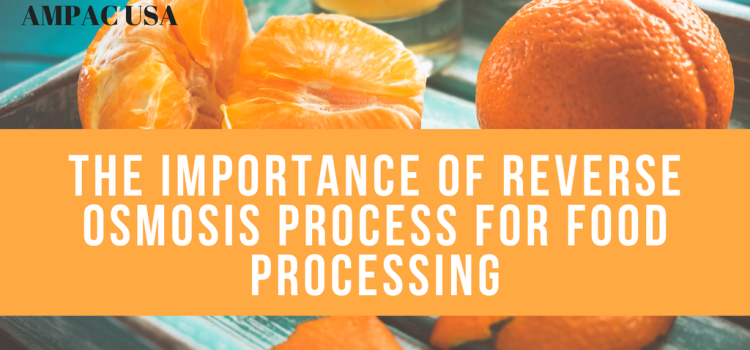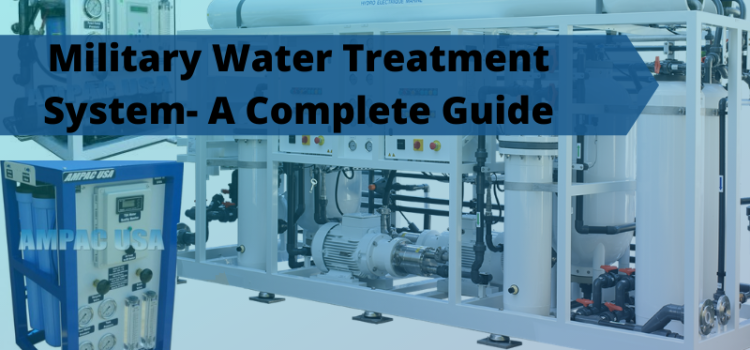Last updated on March 29th, 2025 at 02:03 pm
Most of the reverse osmosis water treatment plants are situated on the whims of the ocean or water bodies. So are many industries including the food processing industry. Agriculture alone takes up more than half of our freshwater reserve as vegetables, fruits and grains require water to grow. However one of the major concern of at least 33 percent of consumers is whether the food processed is safe for consumption. There’s always the fear of diseases like E. Coli that can cause serious health problems. Food processing industries, therefore, remain careful in their approach and dread an outbreak. As a precautionary measure, almost every food processing industry has systems that are run on the theory of Reverse Osmosis.
How does RO help in Food Processing ?
Osmosis is a natural process of flow of water or liquid through a semi-permeable membrane when two solutions of differing concentrations are placed on either side. The liquid passes from a solution of lower concentration to higher concentration in order to balance the amount of salt in each.
Reverse Osmosis was developed as a result of it that puts pressure on the water to be on the lower concentration side. This semi-permeable membrane acts as a filter for stopping harmful chemicals, organic materials, sediments and other impurities to pass through. The resulting water is fresh and free of any contaminants.
Today reverse osmosis filters are used in almost every household as well as industries. Food processing being of prime importance considering it deals with the health of the masses uses this method of water purification to use it in various functions.
In what ways does the food processing industry use RO?
In Food Processing industry, water is used in almost every aspect and corner of the factory. Take a simple example of canning of diced tomatoes.
- Raw tomatoes are washed thoroughly
- They are passed through the dicing machine which has to be absolutely clean and is kept so with water
- The tomatoes are then poached in boiling water and
- Finally, the product is pressure canned in a water bath.
Not only these but to wash the machines involved in handling the product, water is used. This is the story of every food processing factory. But when you are choosing a source of water to use, using municipality supplied tap water has mineralization and even if you treat it for pathogens and bacteria, the mineralization gives a funny taste to the product. If you decide to treat the municipal water with chlorine the organic matter present in it dies but the taste again varies.
Here reverse osmosis comes in to play. The procedure eliminates every contaminant including chlorine to give ready to use healthy and safe drinking water. This, in turn, gives palatable results. Installing an RO unit according to the water quality of your water supply is the best option. It gives you consistent results and the customers a consistent taste with a healthy product.
Ampac USA has a wide range of industrial reverse osmosis systems that purify water for your industry needs. If you belong to the food processing industry, contact us today to make the right choice.
About Author:
Ampac USA is a manufacturer of water treatment systems used around the globe for quality drinking water. The company has an experience of over 40 years, uses the latest technology to provide a standard, reliable products and works with experts to give the best possible service.











Your article helped me a lot, is there any more related content? Thanks!
Thanks for sharing. I read many of your blog posts, cool, your blog is very good. https://www.binance.info/en-IN/register-person?ref=UM6SMJM3
Thank you for your sharing. I am worried that I lack creative ideas. It is your article that makes me full of hope. Thank you. But, I have a question, can you help me?
If you’re in your 20s and looking out on your true love or somebody you’d like to see grow to be your marriage accomplice, EME Hive is a great place to begin your search! Discuss your favorite activities in nice element and be specific with regards to speaking about your favourite music, motion pictures, and different cultural interests. There’s specific chapters about getting rid of unfavourable mindsets that Asian males possess and the way this places Asian men at somewhat of a drawback when it comes to seducing women. Many Asian Millennial males have such negative, defeatist, sufferer mentalities. Now we have already mentioned that this site gives a variety of boons on the free membership for each women and men. Our present (and growing) membership base are made up of over 400,000 verified customers mostly from North America, Philippines, Thailand, Malaysia, Indonesia, Vietnam and Europe. With over a million members from world wide, you’re positive you will discover somebody here to fit your preferences. Altogether we’ve got helped over 50,000 users avoid being scammed on-line.
Regarding senior Asian dating sites, DoULike certainly does minimize the mustard as a result of users are matched with different singles primarily based on what really matters of their values and perception programs. Having a mobile app, based mostly on what the customers say, would be useful, but you need to know that all the features on EasternHoneys are cell-friendly. Once you understand what you’re looking for, it’s time to perform a little research. There are many fish in the sea, and it’s simpler than ever to meet single Asian women. How true that’s has not been established, however there’s little question that that is one of the vital prominent dating websites. That is certainly one of the most typical scammer techniques that you must remember of. This also signifies that it has grow to be even easier now to start a chat with folks who’ve a lot in widespread and are searching for friendship and sincere relationships.
These insights into Asian dating tradition underscore the blend of conventional and trendy practices influencing how relationships are formed and nurtured within the region. Statistics show that greater than 90% of Asian wives who marry somebody from a distinct culture keep married for at the very least 5 years, and many of those relationships final much longer. Her relationships never labored out because she was more unbiased than her mother and could by no means absolutely cater to the calls for of her boyfriends. Perhaps you’ve got already been married, or even more than one. You’ll find yourself studying about totally different traditions, languages, and lifestyles, making your journey much more rewarding. However, since this site is focused at serving to Asians living in the USA discover an individual to love from China and elsewhere, you may be asked about your immigration status. The company says that day by day, it makes attainable 550 marriages in the USA alone. They say it brings you the closest match potential. And now, you do not know whether it is feasible again to open your heart, so continue suffering from loneliness. [url=https://asia-me.review/]asiame review[/url] You might be already at that age when you understand precisely what it means to love.
You’ll know how to use it in just a few minutes and what all of the capabilities do. Whether you’ve used similar platforms earlier than or that is your first time dipping your toes into on-line relationship, we’re confident you’ll discover DoULike satisfying and stress-free – particularly if you’re concerned about mature Asian dating! If you find it onerous at first, don’t fear. Don’t worry because your membership on this dating site will not be going to be displayed on your social media profiles. VIP membership is sort of pricey on this site. Basically, signing up and using this site is very simple, even for a person who’s using a courting site for the first time. Our platform has been created to be user-pleasant and straightforward to make use of so that even those that usually find know-how just a little complicated can nonetheless get essentially the most out of it. Privacy: Dating app profiles are public; your information might be used to search out your other social media accounts.
Don’t be afraid to try something new or exit on a limb – you by no means know who you may meet. If you meet a brand new good friend or skilled acquaintance, do you instantly bombard them with each aspect of your persona and beliefs? Research reveals that people tend to fall for folks just like themselves in relation to issues like relationship history, want for kids, pet preferences, and religion. Research shows that humor is essential to find a companion, so inject some lighthearted humor into your relationship profile. Highlight your adventurous spirit in your courting profile. Many online dating sites withhold key features from customers until they select to upgrade to a premium account. In some instances, websites look at the gap between users’ answers and their behaviours. So I began a month-long experiment, analysing the profiles of in style online daters and their behaviour on courting sites. As an optimist, your courting profile ought to radiate positivity with out being cliché. Why Is a Well-Crafted Online Dating Profile Important? Be aware of the rising reputation: Christian courting platforms have gotten increasingly in style across the globe, including in Australia, Canada, and the US.
Unfortunately, while the nice reminiscences are there loads of the time, we continuously fail to block out the unhealthy reminiscences. Almost nothing. It doesn’t say a factor about someone’s pursuits or whether or not that is somebody you’d get pleasure from spending quite a lot of time with. Say that you want somebody who needs two kids, about three years apart and is keen to undergo fertility therapies with you need to pregnancy turn into an issue. Once you’ve considered all the traits you need in a mate, prioritise them. Supposedly they’d separated very not too long ago, but he was still residing of their house and she very much thought their relationship was intact. Going to someone’s house on the primary date is a recipe for a nasty expertise. Unless you’ve intensive conversations along with your online matches earlier than assembly in individual, you’re principally happening a blind date with someone you know very little about. You’ve got lost someone who was extraordinarily vital and near you.
Therefore it is now widespread to find categorized on-line advertisements written by people who want to establish a new relationship, who’re looking for a partner for all times or who simply need to find individuals with their identical interests and hobbies. Bear in thoughts that you will need most of the options activated, and that some websites may be expensive. For critical outcomes join several sites so you possibly can unfold your efforts out. With Completely Free Dating you’ll be able to create your account in minutes. 4) Dating is a numbers game. While there is not any single components for the “excellent” on-line relationship profile, the examples and suggestions above showcase how you can tailor your bio to highlight your individuality. Single individuals today are constantly bombarded with relationship rules to observe, and many would say they find it overwhelming. Consequently, courting rules usually hinder the courting expertise. As a Russian relationship rule of thumb, be attentive and be competitive with your comments. †This rule tries to create scarcity. For social networking sites that incorporate purposes and [url=https://twitter.com/chnloveantiscam]chnlove real or fake[/url] providers into the group, a developer charge might help generate revenue. For instance, avoid disclosing your social safety quantity, address or date of birth in social media bios.
Decide the bottom number of factors you’ll accept with the intention to exit on a date with someone. Rather than saying “someone who wants youngsters”, get granular. But being kind is one of the best ways to put yourself out there forward of others who’re at par with most of what you have got to supply. My mother and father couldn’t have found each other that method except something really, actually bizarre occurred. Criminals and tricksters have been around since the start of time, but nowadays, their devices are extra superior than at any other time. The Clovis could have overhunted mastodons and mammoths, leading to each species’ extinction in North America and the eventual extinction of the Clovis. Some might discover it helpful in building anticipation, whereas others would possibly view it as a lack of curiosity or taking part in video games. Honestly, while some dates had been complete duds, I additionally had some majorly inspiring conversations, discovered some huge (and much-needed) lessons, and honed in some killer text banter expertise. This course truly gives a detailed understanding of kinship and gender in Philippines. Understanding the newest developments, such because the nuances of digital etiquette and the importance of clear, sincere communication, can considerably improve the way you work together with potential partners.
Your point of view caught my eye and was very interesting. Thanks. I have a question for you.
What sort of man or lady will we anticipate you’ll find on Charmdate? Dating an Eastern European woman is, in some ways, like relationship any other lady. You can also gain a wider perspective on your own culture by dating somebody from another a part of the world. Social Media Groups – Joining Facebook teams or on-line boards associated to Ukrainian tradition can assist you join with people who share your interests. For instance, the age vary of the CharmDate girls you are interested by attending to know, the country they must reside in, and their interests. European relationship sites cater to a wide range of preferences and interests. We’ve a more in-depth studying for you, so you’re welcome to take a look at our article about how to avoid rip-off on relationship sites. Use communication instruments to achieve out to women. Well-detailed profiles, quite a few seductive media information, video reveals, and live chats – this is only a glimpse of the superior options you should use on one of the highest European courting websites – CharmRomance.
You may also make one of the best use of interactive features reminiscent of Like her, Videos, and Letters. Language Exchange Groups: Joining English-Ukrainian language trade teams might be a wonderful opportunity to satisfy Ukrainian singles whereas additionally learning a brand new language. What makes Ukrainian women so desirable for courting? How do I know if a Ukrainian dating site is legit? Another frequent false impression is that Ukrainian ladies are the identical as Russians. Those issues [url=https://charmdatescam.quora.com/Charmdate-Scam-Report-Are-Dating-Profiles-Too-Good-to-be-True]charmdate.com[/url] are price more than gold. While there could also be more employment alternatives in different international locations, it’s not the only purpose (or even an important reason) why we look for overseas males as companions. Why it’s best: LoveForHeart has an outstanding matching engine and strong communication opportunities. Why do I see the same people over again? GenerationLove is a go-to relationship platform for singles in Eastern Europe and past, helping folks connect and construct significant relationships. Start constructing relationships with ladies. What’s the one relationship behavior that either sabotages you or makes you miserable in dating and relationships?
Men, wanting a fantasy that’s cleverly marketed to them by relationship sites and singles tours, consider that Eastern European girls are all lower from the identical stereotypical mold. You can mix chatting and emailing relying on a situation, mood, time, and many others. Similar in structure to Badoo, Mamba is also a favorite relationship site for Ukrainian singles. 3. How Do Ukrainian Dating Sites Work? The success stories of couples who met by way of on-line relationship platforms serve as highly effective testimonials to the effectiveness of digital Cupid in connecting hearts across borders. We want a accountable partner who will love us, present for a stable house (which doesn’t mean you want tens of millions), and respect us. And explore many extra benefits that may help you discover love! The whole procedure of signing up will only take greater than a few minutes. Keep in mind that there are at least seven hours of time difference between Ukraine and the US, so it could take a few tries to discover a time that will fit each your schedules and won’t leave you feeling rushed or unsatisfied after the decision has ended. Both males and females joined the Ukrainian army, however men here encompass a bigger position because a better majority of them at the moment are defending the country in opposition to Russians.
Ukrainian girls are perfect for marriage due to their outlook on life. Some local ladies prefer the private contact of utilizing a reputable marriage company to safe foreign males who actually are their good match. Instead, it’s essential to know that Eastern Europeaners are very happy with their countries, and most of these international locations have a protracted and proud historical past with wealthy traditions that form an integral a part of who we’re. ’s a motive to assume that you’ll find a terrific match for any objective, whether it’s love, friendship, or just online communication. You’ll be able to mix each free and paid features to construct connections with girls. A few of them, like Winks and Likes come freed from charge, while others can be found solely in the event you avail of the credit score package deal. Other myths are much less harmless and might actually cause you to overlook out on the prospect of assembly, dating, and marrying an amazing lady (who may be from Eastern Europe). Once you date a woman from Eastern Europe, you might be meeting a companion with proud family traditions, customs, and languages which might be woven deeply into our identification.